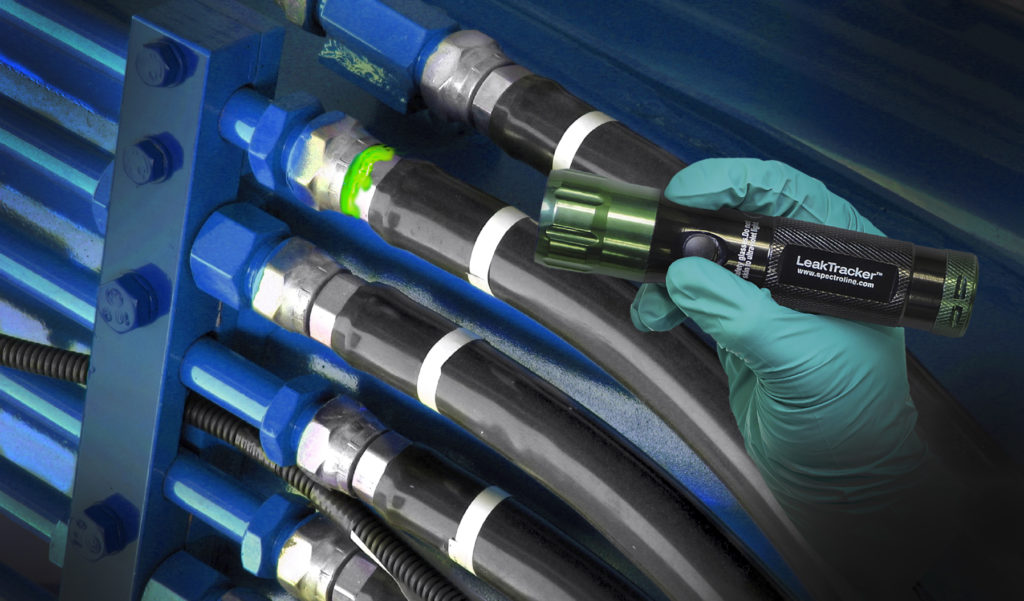Find and Repair Hydraulic System Leaks with Fluorescent Leak Detection

Spectroline Editorial Feature Published by Fluid Power Journal
Fluorescent leak detection can help save time on hydraulic hose repair. Spectroline’s feature article published by Fluid Power Journal highlights the importance of finding leaks in hydraulic systems. The article discusses types of leaks, leaking fluid costs, practicing preventive maintenance and the benefits of using fluorescent leak detection.
Overtime, hydraulic fluid systems can develop internal and external leaks which lead to operational problems. External leaks are the easiest to spot and where fluorescent leak detection performs best in locating leaks. If not taken care of right away leaking hydraulics can create hazardous conditions for workers and potential environmental fines for the leaking fluid.
Don’t Ignore Your System Repairs
When it comes to needing hydraulic hose repair, many times the mindset is to continue operations and ignore the problem. This can do more harm than good and prolong the unavoidable need to fix the equipment. The cost of lost operational hydraulic fluid and equipment repairs can easily add up to thousands of dollars. These types of repairs also affect indirect costs such as wages and clean up and disposal of the fluid, which can significantly hurt operational time.
To save on these unforeseen events, preventive maintenance is key to implement. Ask your technician for a preventive maintenance check list. A scheduled maintenance plan allows for a proactive approach towards repairs, which can save time and money. As a result, that money can be allocated to other resources and budgets.
Why Fluorescent Leak Detection?
Fluorescent leak detection is easy to incorporate into a preventive maintenance program. It is visually intuitive, cost effective and extremely efficient for helping leaking hydraulics. Technicians can safely scan near moving parts to easily detect all leak types. Spectroline ULTRA dye can remain safely in the system to aid in future repairs, ultimately preventing expensive equipment breakdown, reducing labor costs due to downtime, and reducing environmental pollution and hazardous working conditions.
Read the Full Article from Fluid Power Journal.






